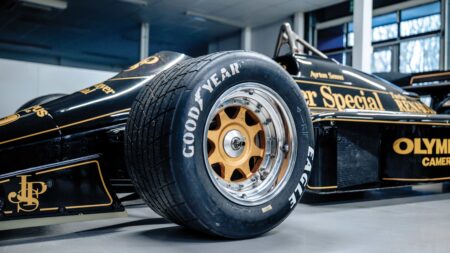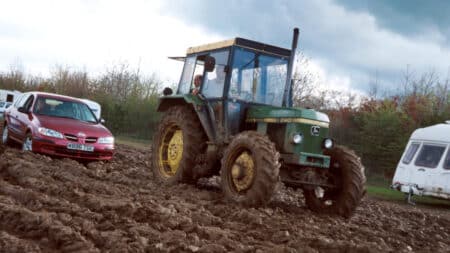
Why Kimi Antonelli was the silver lining in Mercedes' 'worst' F1 race of 2025
As Mercedes dropped down the F1 order in Saudi Arabia, team boss Toto Wolff found a hope in Kimi Antonelli's performance for the team
On September 2, 2013 the Formula 1 world was looking forward to the Italian Grand Prix with half an eye on Red Bull. Mark Webber was leaving after seven years with the team and one of the most prized seats in the house would be available in 2014.
By the beginning of September it was a straight fight between Räikkönen and Ricciardo. Old versus new, experienced versus inexperienced. One might also presume expensive versus cheap.
Red Bull released a video on that Monday morning and on it, layered over clips of an unidentified driver entering the factory, team principal Christian Horner said: “It gives me great pleasure to announce that our new driver for the 2014 season with Infiniti Red Bull Racing will be… [insert X-Factor-like pause here] Daniel Ricciardo.”
The decision didn’t surprise too many. By then rumours were circulating that Räikkönen was, in fact, making an improbable return to Ferrari. However, what did surprise one or two was that Ricciardo’s team-mate for the past two seasons, Jean-Éric Vergne, had been passed over in the whole process.
In 2010 I went to see Trevor Carlin, the founder and co-owner of Carlin Motorsport, and after chatting about GP2 entries and the like talk turned to young racers. Carlin has brought some of the very best through its junior ranks and Trevor was a man who knew what to look for. “Obviously I’m going to be biased and talk about our drivers,” he told me at the time, “but certainly Jean-Éric Vergne is a real class act.
“James Calado is a very strong driver as well, but when you see what Jean-Éric can do when it comes to qualifying and how forceful he can be in a race situation you realise just how good he is. He’s potentially one of the best we’ve ever had.” This coming from the man that ran Vettel in the 2006 and 2007 Formula Renault 3.5 Championships.
In 2010 Vergne had walked the British Formula 3 Championship with Carlin and had beaten second-placed Calado by some 100 points. The following season he finished second to Robert Wickens in Formula Renault 3.5 and then, in 2012, he was on the Formula 1 grid in a Toro Rosso. I admit that, despite Ricciardo’s strong results (he won the British F3 title in 2009), I expected Vergne to have the edge over the affable Australian.
He scored more points than him in 2012 – 16 to 10 – thanks to four eighth-place finishes. However, Ricciardo had caught a few people’s eyes with a sixth-place grid position in Bahrain. It was a stunning performance especially when you consider that Vergne failed to get into Q3 during that year and, after the season opener in Australia, started no higher than 14th. It’s true that Ricciardo had the benefit of half a season at HRT behind him, but details like that are often forgotten by those that matter.
Ricciardo’s strong qualifying performances have continued into this year as well, and coupled with some better races, it seems that Red Bull made the right decision in September. What happened to Vergne’s promise, though? Is he suffering from the opposite of the Kamui Kobayashi syndrome? The Japanese driver won the 2008-09 GP2 Asia Series, but he wasn’t considered the fastest young driver when he stepped into the Toyota at the end of 2009. He immediately made an impression, however, picking up points in the last two races. It was as if he was made for F1. Is Jean-Éric just not made for F1?
“It’s hard to say isn’t it,” Carlin tells me today. “Jean-Éric just hasn’t had that headline result yet and Daniel has managed some pretty impressive qualifying performances. On Dan’s side, though, his races haven’t always been stunning. In fact, Jean-Éric’s racing has been slightly better, I really don’t think there’s much between them personally.
“To be honest there was nothing between them when they raced for Carlin, but they did have a different skill set. Daniel was very, very good at qualifying and he’d start from the front, do a decent first lap and then bugger off [sound familiar?]. He didn’t really get involved in too much racing because he was always at the front. Jean-Éric on the other hand had some mighty qualifying performances in F3, but when he didn’t he’d just force his way through the pack in the race. There was never a slow lap – he was much like Alonso in that sense.”
The line between winning and losing in any world-class sport is thin – in Formula 1 it can be almost invisible. Jean-Éric, despite public appearance, must be gutted to have missed out on the Red Bull seat. The question is whether he still has a future in Formula 1, or whether Red Bull will eventually cast him aside like it did Alguersuari and Buemi.
“They both had a good shot,” says Carlin when I mention the ex-Toro Rosso drivers, “and neither of them did anything spectacular. Also, there were some young guns in the wings. They had their chance, they didn’t do anything so move away, try the next two. That’s how [Red Bull talent spotter] Helmut [Marko] sees it. He gives everybody a chance and it’s down to them to grasp it.” I suggest that Alguersuari and Buemi could well have graduated to Red Bull had Webber left at a more opportune time, but Carlin rightly points out that “Red Bull got them to F1 and if they had been stunning, another team would have picked them up. It didn’t happen so they clearly didn’t convince anyone of their worth.”
Ricciardo’s seat at Toro Rosso is thought to be going to Antonio Felix da Costa – another Red Bull young driver and ex-Carlin racer – but he’ll have to work hard to match Vergne. “He had a real dip this year in Formula Renault 3.5, but he’s back at the front again,” says Carlin. “He’s got the right kind of attitude, he’s very hungry and he’s a great team player. I’d put him on a similar level to Dan and Jean-Éric, but he’s got to prove himself and be the one Red Bull wants to keep in a few years time.”
It’s clear that good results are not enough to impress Red Bull. If you want to stay in F1 you’ve got to deliver some giant-killing performances (see Vettel in the 2008 Italian Grand Prix). Ricciardo’s work has only just begun.
Click here for more Grand Prix coverage

As Mercedes dropped down the F1 order in Saudi Arabia, team boss Toto Wolff found a hope in Kimi Antonelli's performance for the team

Zak Brown is still adamant on his approach that Lando Norris and Oscar Piastri are ‘number ones’ at McLaren. But how long will it be before history repeats itself and takes a sour turn?

It's 40 years since Ayrton Senna's incredible first F1 win at Estoril – we captured the brilliant grand prix car he did it in for this month's magazine

Twenty-five years ago, the British GP was the subject of a 'prank' by the powers that be as Bernie Ecclestone and Max Mosley made the BRDC hold the race on Easter Sunday. But the chaos that ensued didn't have the desired effect, as Matt Bishop recalls